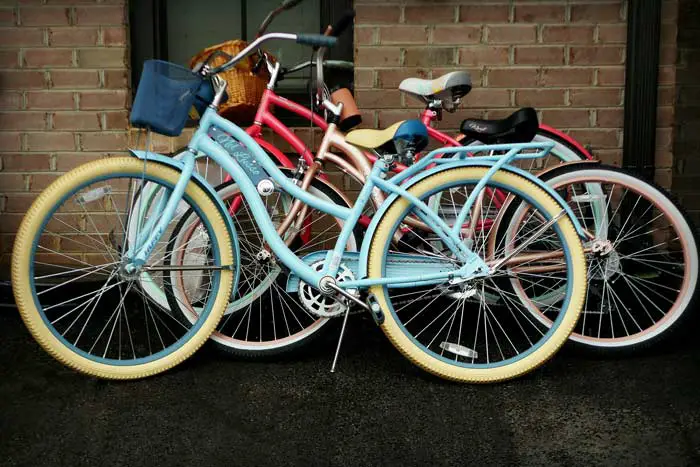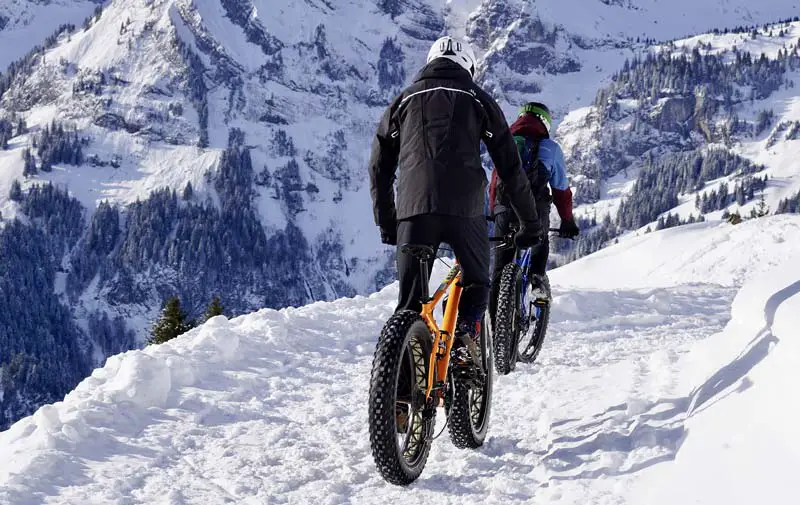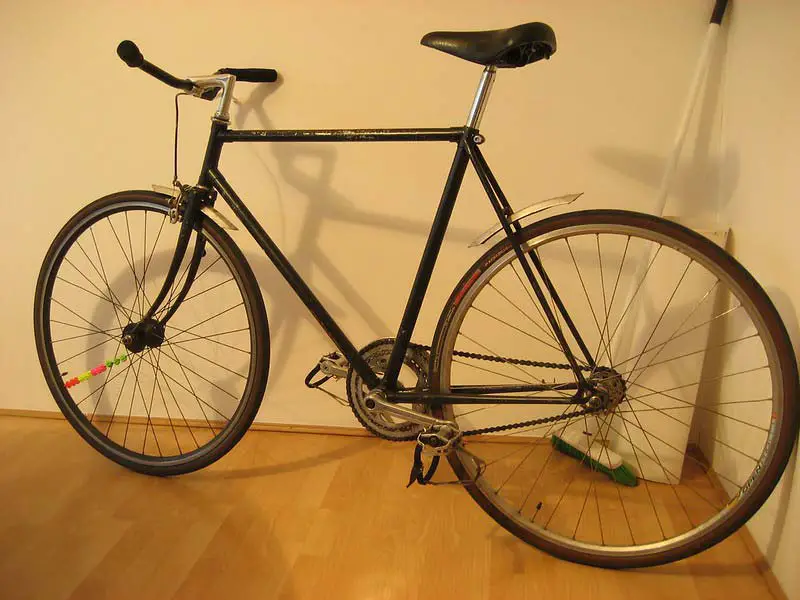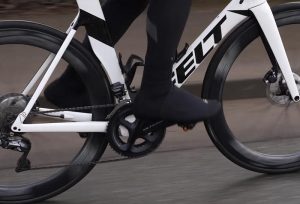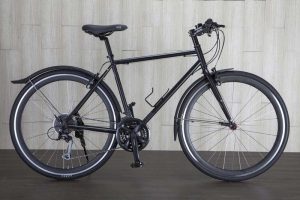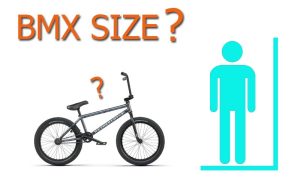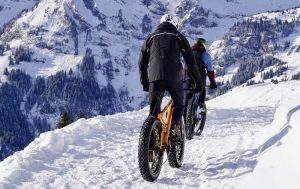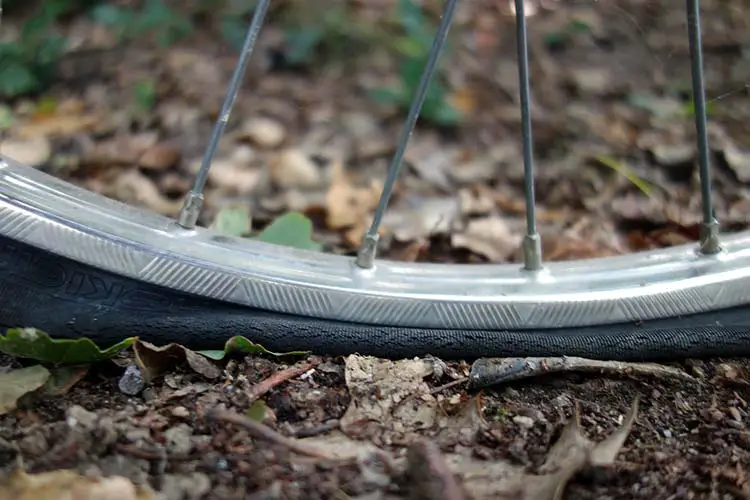
Riding a bicycle safely rests on the proper tire inflation. As with driving a car, you should always inspect your bicycle tires so that they are properly inflated because they will save you dollars on bike repairs (and injuries). No matter how fancy or expensive your bike is, it all comes down to proper tire inflation.
Knowing the correct amount of pressure in your tires can save a life. Too much pressure could lead to blowouts, resulting in road accidents. However, too little pressure will also lead to similar injuries because of being off-balance.
See also:
So, how do you check bike tire pressure? Fortunately, we have some tips and tricks on how to measure your bicycle tire pressure and how to maintain it. Read on below to find out more about bike tire pressures.
Contents
Bike Tire psi Chart
Tire pressures are measured in psi. There are many considerations and factors as to how much pressure you should put inside your bike tires. For instance, the rider weight can come into play because a rider with lighter weight requires a different amount of tire pressure to keep them balanced. The wheel size is also important to know about when filling up your tires.
To save you some trouble, here’s a simple bike tire psi chart that we prepared just for you, using the most common bike tire sizes and rider weights:
| Tire size | ||||
| Rider weight | 33 to 35 mm | 35 to 38 mm | 38 to 42 mm | 42 to 45 mm |
| 90 lbs. | 23 psi | 21 psi | 20 psi | 18 psi |
| 100 lbs. | 25 psi | 24 psi | 22 psi | 20 psi |
| 110 lbs. | 28 psi | 26 psi | 24 psi | 21 psi |
| 120 lbs. | 30 psi | 28 psi | 26 psi | 23 psi |
| 130 lbs. | 32 psi | 30 psi | 27 psi | 25 psi |
| 140 lbs. | 34 psi | 32 psi | 29 psi | 26 psi |
| 150 lbs. | 36 psi | 34 psi | 31 psi | 28 psi |
| 160 lbs. | 38 psi | 35 psi | 32 psi | 29 psi |
| 170 lbs. | 39 psi | 37 psi | 34 psi | 30 psi |
| 180 lbs. | 41 psi | 38 psi | 35 psi | 31 psi |
| 190 lbs. | 42 psi | 39 psi | 36 psi | 33 psi |
| 200 lbs. | 43 psi | 41 psi | 37 psi | 33 psi |
| 210 lbs. | 44 psi | 42 psi | 38 psi | 34 psi |
| 220 lbs. | 45 psi | 43 psi | 39 psi | 35 psi |
| 230 lbs. | 46 psi | 43 psi | 39 psi | 36 psi |
| 240 lbs. | 47 psi | 44 psi | 40 psi | 36 psi |
| 250 lbs. | 47 psi | 45 psi | 41 psi | 37 psi |
Checking bike tire pressure differs greatly between types of bikes and the types of tires. For example, a road bike requires more pressure while mountain bikes and hybrid bikes require less. Here’s a common difference between the most common bike types:
| Mountain bike tires | Hybrid bike tires | Road bike tires |
| 25 to 35 psi | 40 to 70 psi | 80 to 130 psi |
As you can see from the charts above, a heavier rider weight requires more pressure for your tires. If you aren’t sure what pressure you should put into your bike tires, you can read the bike tire’s sidewall to check. Always follow the manufacturer’s recommended bike tire pressure so that you’ll be somehow safe from accidents like blowouts.
How To Check Bike Tire Pressure
So, how do you check the bike tire pressure? There are different ways, but let’s start with a tire pressure gauge, which is the easiest. Tire gauges are available in most bike stores or even gasoline stations, so you’re bound to find one on the way. Here’s the way to do it:
- Look for the bike tire pressure range on the sidewall of your bike tires. All bike tires have specifications to help you out in filling them up properly. Never go over or under the specified tire pressure range to avoid accidents.
- Connect the tire gauge onto the valve and press down. This will display the pressure of the bike tire on the gauge.
- Fill up the tire with pressure from a pump as needed until you reached the desired or required pressure. If you have a pump with a built-in pressure gauge, that will speed up the work.

How Much Tire Pressure For Mountain Bike
Mountain bikes are typically off-road bicycles so they won’t need a lot of air as compared to a regular bicycle that’s used in the city or town, such as road bikes. Generally, 25 to 35 psi is suitable for a bike tire that’s used for mountain bikes.
For that, here’s a simple chart to help you out with the most common mountain bike tire sizes:
| Tire width | 29 x 2.1 inches | 29 x 2.3 inches | 27.5 x 2.8 inches |
| Ideal tire pressure | 30 psi | 24.6 psi | 17.7 psi |
As you can see above, a wider tire requires more pressure. However, this is just a sample and a guideline – always check your manufacturer’s specifications by looking at the sidewall of your mountain bike tires. This will let you know just how much psi you should put into your bike tires.
What Is The Proper Tire Pressure For A Road Bike
Road bikes typically require more pressure since you will be using them for daily commuting and even racing. They won’t likely encounter bumpy roads so their pressure is significantly higher and their tires have a different design. Let’s have a look at some common road bike sizes and their ideal pressure:
| Tire width | 700 x 23 mm | 700 x 25 mm | 700 x 28 mm |
| Ideal tire pressure | 100 psi | 85 psi | 65 to 70 psi |
With that said, road tires usually have about 80 to 130 psi on average. A higher pressure lets you go faster and that’s why they require more pressure.
How To Check Bike Tire Pressure Without Gauge
So, what if you don’t have a bike gauge? How will you know the proper pressure you need for your bike tires? Worry not – in a sticky situation or an emergency, there are improvisations that you can do. Keep in mind that these should only be done when you cannot find a bike tire pressure and you’re in the middle of nowhere:
- If you’re on a road bike, just do a simple squeezing test. Inflate the tire until you cannot squeeze the tire on the sides. Road bikes typically need to be around 100 psi, which cannot be easily squeezed by your fingers.
- If you have a mountain bike, mount yourself and look at the tires from the top view. Look at the tires if they are protruding on each side. If the protrusion from this view measures more than 2 mm, that means you need to inflate your tires.
- Once you’ve inflated your mountain bike tires, check if they have a “give” by squeezing them. If they are too hard, you can let out some air – a mountain bike usually shouldn’t have a lot of pressure since it’s meant for off-road use.
Sport Bike Tire Pressure
Sportbikes work best with 36 to 40 psi but it still depends on your manufacturer’s recommendations. Since sport bikes are usually exposed to hot temperatures, you’ll need to have a balanced pressure to avoid blowouts.
With that said, the pressure will also change depending on who is riding and the cargo. Both the temperature/weather and the rider weight have great influence, even on a sportbike, when it comes to the proper tire pressure.
Other bicycles’ tire pressure
Different bikes also have different tire pressure ranges. For instance, a kid’s bike usually requires 20 to 40 psi, while a hybrid bike can be inflated from 50 to 70 psi depending on the manufacturer’s specifications.
What factors can affect a bike tire’s required pressure?
Any bike tire is subject to the following factors when it comes to achieving the correct (and safe) tire pressure:
1. Rider weight
First of all, bike tires require different pressures depending on the rider’s weight. A heavier rider needs to ride on a bike with much more pressure on the tires.
2. Temperature
Bike tires could overheat and explode quickly during hot weather, which is why putting the right pressure will also depend on the season of the year.
3. Frequency of usage
Know just how often you will use the bike. The more you use the bike, the more you need to inflate it. Moreover, tires automatically deflate even if you don’t use them.
4. Terrain conditions
A bumpy road certainly isn’t a good spot for a high-pressure set of tires, so stick to lower pressure instead.
Conclusion
As a whole, bicycle tires should always be properly inflated with the right amount of pressure. This saves you from trouble in the long run because improper pressure often leads to accidents on the road (or in the mountains). Be sure to carry a tire pressure gauge with you during emergencies. You can also schedule your trips to make sure you’ll have a sure spot, such as a gasoline station, to refill your tires in an emergency.
